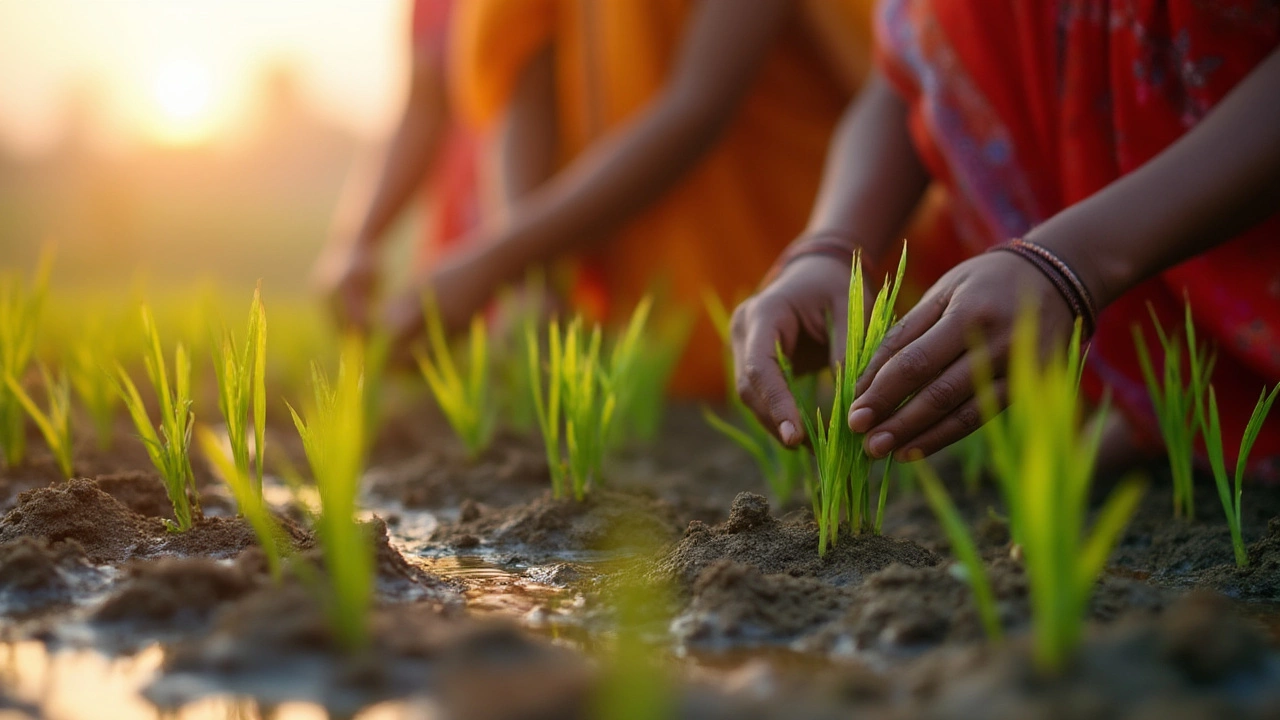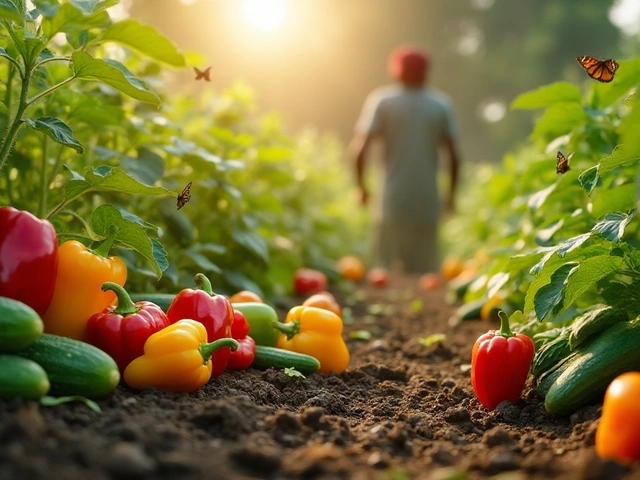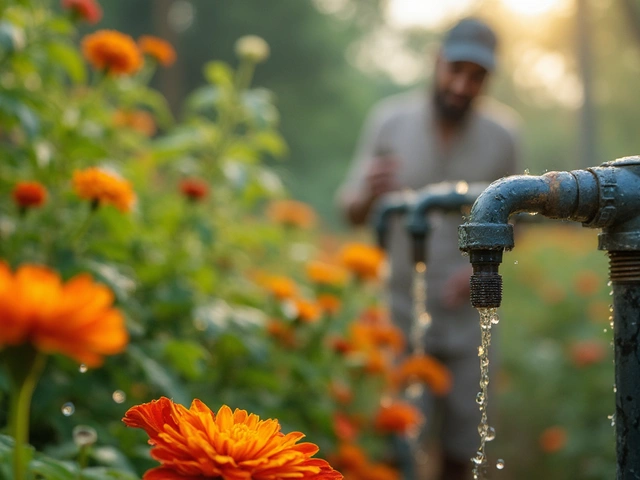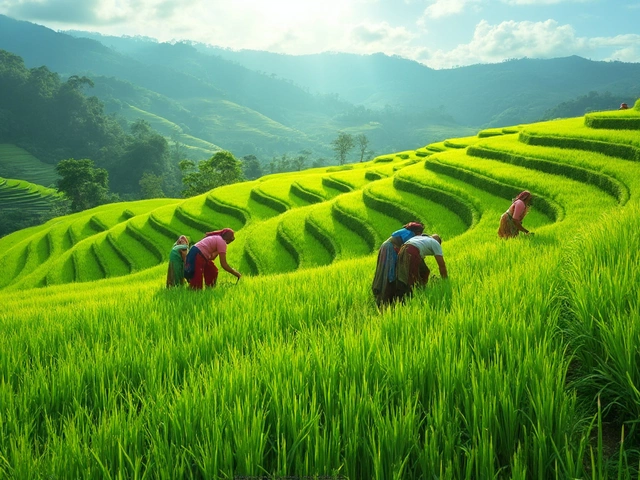If you think rice planting is just tossing seeds into a muddy field, think again. Getting the depth right can make or break your harvest—literally. Plant too shallow? Birds and wind will snatch your dreams before they sprout. Go too deep? Those seeds might rot before they ever feel the sun. How deep you plant doesn’t just decide if your rice comes up—it decides if you’ll get that healthy, golden field come harvest time. With so much riding on half an inch of soil, it’s kind of wild that most backyard gardeners and small-scale farmers get this basic step wrong. Let’s set the record straight once and for all on how deep you should really plant rice.
Why Rice Planting Depth Is So Critical
It’s easy to overlook, but rice is pickier about planting depth than you’d expect. Think about rice’s natural habitat: flooded paddies and mucky soils, environments regular vegetable seeds might dread. Now, rice seeds are tough, but not invincible. If you plant them less than about half an inch (roughly 1–2 centimeters), pigeons, sparrows, and even bugs can gobble up your future crop in minutes. A shallow planting also means the seed dries out fast, especially during early summer when the heat spikes and soils can lose moisture in a flash.
The flip side is just as risky. Push those grains down an inch or more (2.5 centimeters is about where trouble starts), and your seeds may rot before they ever sprout. Rice seeds need oxygen to germinate—a fact that throws beginners off, since you’d think those water-loving plants wouldn’t care. But soil becomes less oxygen-rich as you go deeper, especially when flooded. When planted too deep, the seed’s tiny shoot (the coleoptile, to get nerdy) might not have the strength to reach the surface before it runs out of stored energy. Translation: Your harvest drops like a rock and your plants emerge patchy, creating the perfect ground for weeds to muscle in.
Experiments from agricultural universities in Southeast Asia—where rice has been grown for thousands of years—consistently show a sweet spot. Seedlings come up best when they’re planted between 1 and 2 centimeters deep. Even a difference of half a centimeter shifts yields noticeably. Some researchers in Japan tried planting at a 3-centimeter depth, expecting bigger roots and fewer bird losses. Instead, emergence dropped by nearly 30%. In those muddy, waterlogged soils, every extra millimeter really does matter.
Besides emergence and avoiding pests, depth controls how uniformly your field sprouts. If you just broadcast or toss seeds, some get buried by mud splashes while others land barely covered. That’s why serious rice growers either drill seeds with machines or set up clever rakes and boards to scrape soil evenly. Uniform emergence is key for later steps, like managing weeds—because if your rice comes up at patchy heights, weeds jump into the gaps and compete for nutrients right away.
Here’s a little-known fact: the right planting depth also gives rice a surprising ability to withstand flash floods and heat stress. When young roots and shoots develop closer to the soil’s surface, they’re ready to bounce back after short floods or sudden temperature swings—a big reason why traditional methods in regions with unpredictable weather stick closely to recommended depths. That tiny change underneath the mud can mean disaster or a field full of waving green rice.
The Science Behind the Ideal Rice Planting Depth
So why is this exact depth range—1 to 2 centimeters—so magic for rice? There’s real biology at work here. Rice seeds, unlike dryland grains like wheat or corn, have adapted to germinate in soaked soils, but not under heavy, oxygen-starved mud. When you plant right at the 1–2 cm window, you balance two things perfectly: moisture and oxygen.
If the soil is too close to the surface (less than 1 cm), it heats up and dries out quickly, which stresses the seed. Exposed rice grains get hard or moldy instead of sprouting. In this shallow zone, roots don’t anchor well, and shoots struggle with strong winds—especially crucial for direct-seeded rice which doesn’t get transplanted.
Now, at 1 to 2 centimeters deep, the seed sits where the soil keeps enough warmth and moisture to activate growth, but not so deep that oxygen runs short. This oxygen is crucial for the sprouting seed, triggering enzyme activity so starches turn to sugars—the fuel for that first, daring growth spurt. Rice has a cool adaptation: its coleoptile, that little sheath protecting the baby shoot, can push through a surprising amount of mud as long as it’s not exhausted by the journey. In most varieties, this sheath can’t make it much beyond 3–4 centimeters. Below that, development simply stalls out.
This is where the rice variety you’re planting matters. Japanese research in 2023 showed that modern hybrid rice has slightly different tolerance to depth compared to heirloom or traditional seeds. Some hybrids respond better if you nudge them slightly deeper (up to 2.5 cm), but lose that edge entirely if you go further. Meanwhile, older “landrace” varieties often need to stay closer to the 1-cm mark since their coleoptiles are shorter. If you aren’t sure which variety you have, or you’re growing common types like IR64 or Jasmine, stick with 1–2 cm to cover your bases.
Flooding changes things a bit too. If you’re planting in a field that will be flooded soon after seeding—like many Asian paddy systems—you don’t want the seed to float away or sit above the saturated soil. Carefully covering the seed to the right depth helps anchor them in place before the first rush of water comes. This is why some farmers use slightly sticky mud (by tilling the field after a light rain) just before sowing. The mud “hugs” the rice grain at the ideal depth and keeps it there even after shallow flooding arrives.
Here’s an extra tip—soil type affects ideal depth, though only slightly. In super sandy soils, go just a hair deeper (closer to 2 cm) since sand dries out faster. Heavy clay, which holds water, does better with seeds a bit shallower (about 1 cm), so seedlings don’t suffocate. Most garden or backyard growers can ignore this detail unless their fields are very unusual, but for folks with access to soil tests, it’s worth knowing.
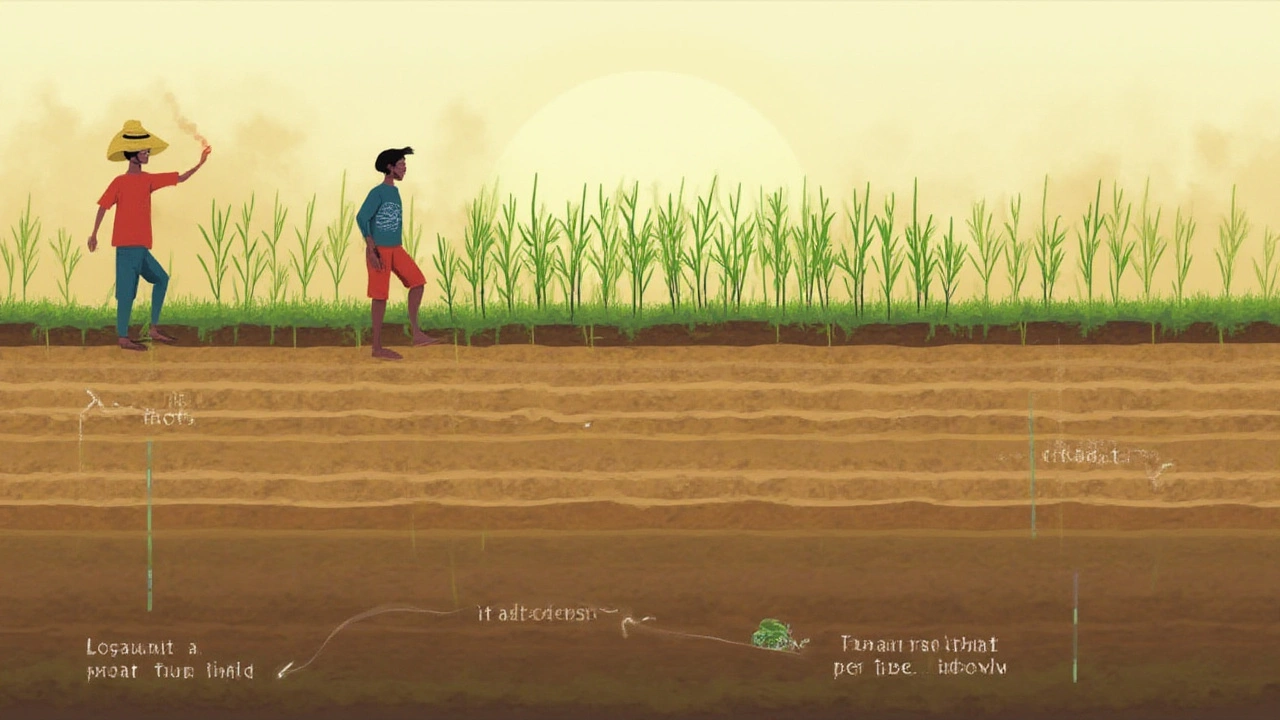
Common Mistakes When Planting Rice—and How to Avoid Them
Plenty of rice growers—especially those just starting out—make the same small but devastating errors with seed depth. The first classic blunder? Rushing and skipping the depth check altogether, especially if you’re broadcasting rice by hand. Without some kind of board, rake, or even a gentle pressing with your palm, seeds end up scattered at every depth imaginable. You might have sprouts in one corner, nothing in another. That patchiness guarantees uneven growth and a weedy mess later on.
Another repeat offender involves assuming more is better. Some gardeners, worried about wind or birds, push rice grains down over an inch, thinking deeper means safer. Instead, germination plummets, and those dark, waterlogged depths kill off more seeds than the crows ever could. Remember: rice roots love wet, but the tiny sprout still needs air to launch.
If you’re planting into flooded fields (“wet direct-seeding”), there’s temptation to throw seeds right after flooding. Don’t do it, unless you want half your seed to float away or clump into unworkable mats. The secret is to sow onto the muddy surface before adding standing water, or to use pre-germinated (sprouted) seed if you must sow into shallow water. Even then, gently press or rake the seeds in so they settle just under the mud, not lost or exposed on top.
Maybe the weirdest mistake? Failing to adjust for seed type. Some specialty rice varieties, like black rice or aromatic basmati, can have slightly different seed sizes or hull thicknesses. If you're using these, a test patch is smart: plant at a few different depths and see where emergence is strongest after a week. Mark those rows and use that depth for the main crop.
How about this: always line up your seed rows carefully. Even for tiny backyard plots, a cheap garden marker (even string and pegs) helps you keep planting depth uniform by guiding your hand or tool. Amateur growers might laugh at this, but every commercial producer swears by markers for this reason. It’s easy, it’s fast, and you avoid holes where weeds take over.
Here’s a quick list to dodge the usual pitfalls:
- Don’t plant rice deeper than 2.5 cm, no matter how tempting.
- Press or rake after sowing, never just toss and forget.
- Use uniform rows or pattern—consistency is king.
- Check soil moisture before sowing. If it feels dry 1 cm below the surface, water lightly.
- Birds a problem? Use light netting for the first week, but avoid burying seed deeper as a substitute.
Care for young rice doesn’t stop at planting depth—but nailing this step makes every stage after much easier, from weed management to fertilizing to the final harvest.
Pro Tips for Perfect Rice Planting Every Time
Alright, you’ve got the basics, but what separates the lush, magazine-worthy rice stand from the patchy, disappointing one? The difference is almost always in the details around planting depth—the sort of stuff old-timers don’t always write down. Whether you’re growing a backyard paddy or experimenting with buckets and containers, these are the secrets the pros actually use.
First, always pre-wet your field or bed before seeding. Imagine planting rice into cracked, dry dirt—those cracks can suck seeds so deep you’d need a metal detector to find them. A slightly damp (but not flooded) surface is ideal for making sure your seeds land and stay at your chosen depth. Sprinkle water if needed, and wait for it to sink in.
Next, consider using pre-germinated seeds. This trick takes a bit more time but boosts emergence hugely. Soak rice grains in warm water for 24 hours (change the water halfway if it gets cloudy), then drain and keep them wrapped in damp cheesecloth or a towel for another 24–48 hours until you see little white shoots. Now the seed is already “awake”—just tuck these sprouted grains at the right depth, and they race into growth, pushing aside birds and weeds.
For folks using flood irrigation, time your water so it doesn’t wash out seeds. The best way? Plant just before the morning flood, so seeds have time to settle and the mud can start covering them naturally as water rises. If you need to flood immediately after sowing, lightly roll or press the soil first—that way, even a thin mud crust will lock the seed at the perfect depth.
Consistent depth is easier with tools, but you don’t need fancy machines for a smaller plot. A simple homemade rake with 2-cm long tines, spaced at your ideal row distance, can “scar” lines for dropping rice grains. Cover loosely with soil and pat with your palm or the flat of the rake. For container rice, use a chopstick, pencil, or even a finger to poke holes exactly 1–2 cm deep, then drop in the seed and smooth the surface.
Want fancy equipment? Japanese and Filipino rice growers often convert old wooden boards into “seeders.” A board with thin wooden ribs spaced 12–15 cm apart creates perfect lines—just press into the mud and sow along the marks. You end up with rows as straight as a ruler, and you never guess about depth.
Stay sharp on depth all season long, especially after heavy rain or irrigation. If you notice the soil settling or washing away, gently add a thin layer of fine compost or topsoil (just half a centimeter)—enough to keep seeds protected but not buried too deep. This saves early seedlings from sun scorch or bird attacks.
Finally, trust your eyes. Within 4 to 7 days, rice planted at the perfect depth will show even, green blades all across your field. If emergence is slow or spotty, don’t panic. Mark where it’s worst and check the depth—use your finger or a thin stick to probe in those spots. Tweak your depth next time based on what you find. The perfect planting depth for how deep to plant rice isn’t a myth—it’s a metric proven by real farmers and research everywhere rice grows.
If all this sounds over-the-top for a handful of grains, just remember: rice feeds billions because past generations never saw seed planting as a mindless chore. That perfect depth is a tiny act of precision that sets up everything else—the difference between feeding a family and replanting a hope for next year.
